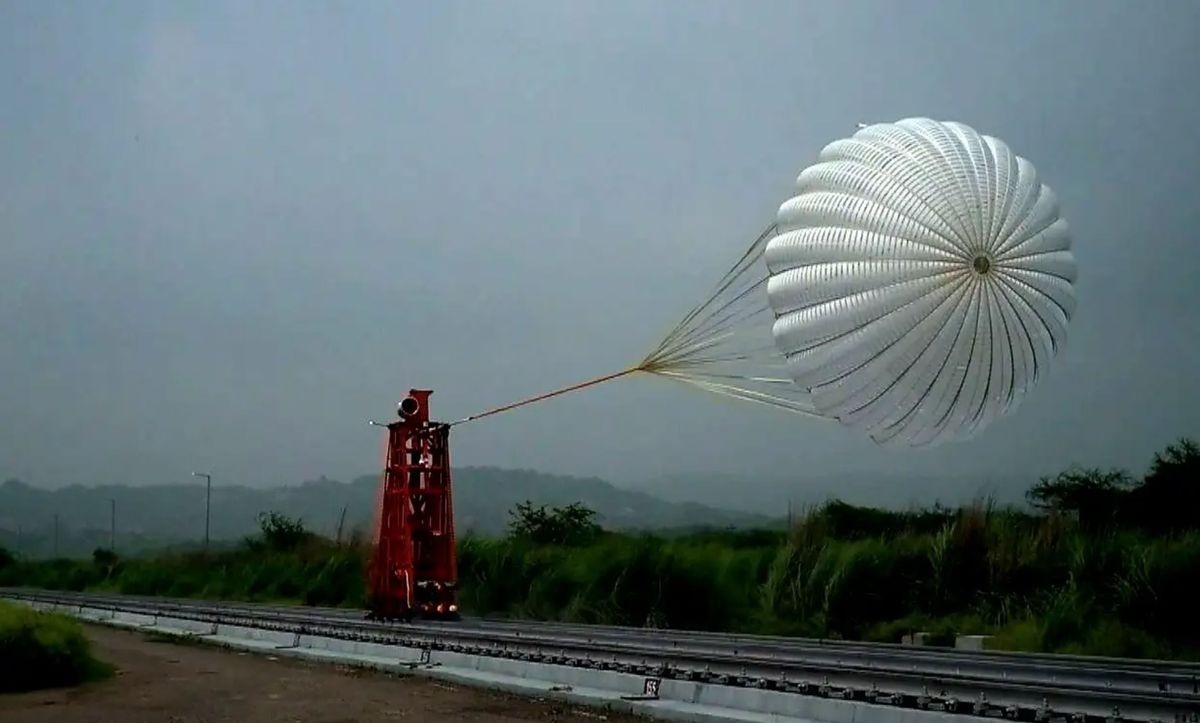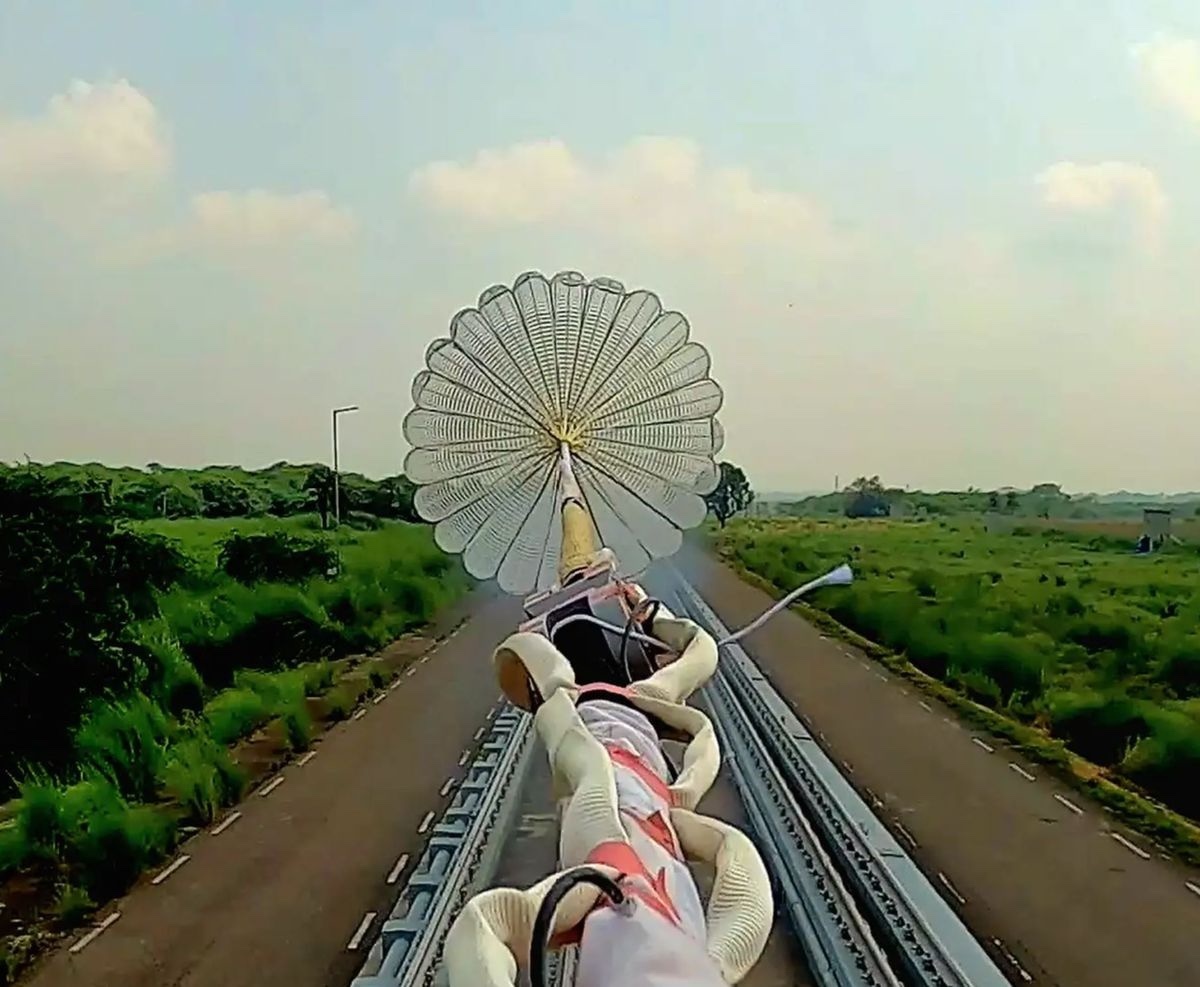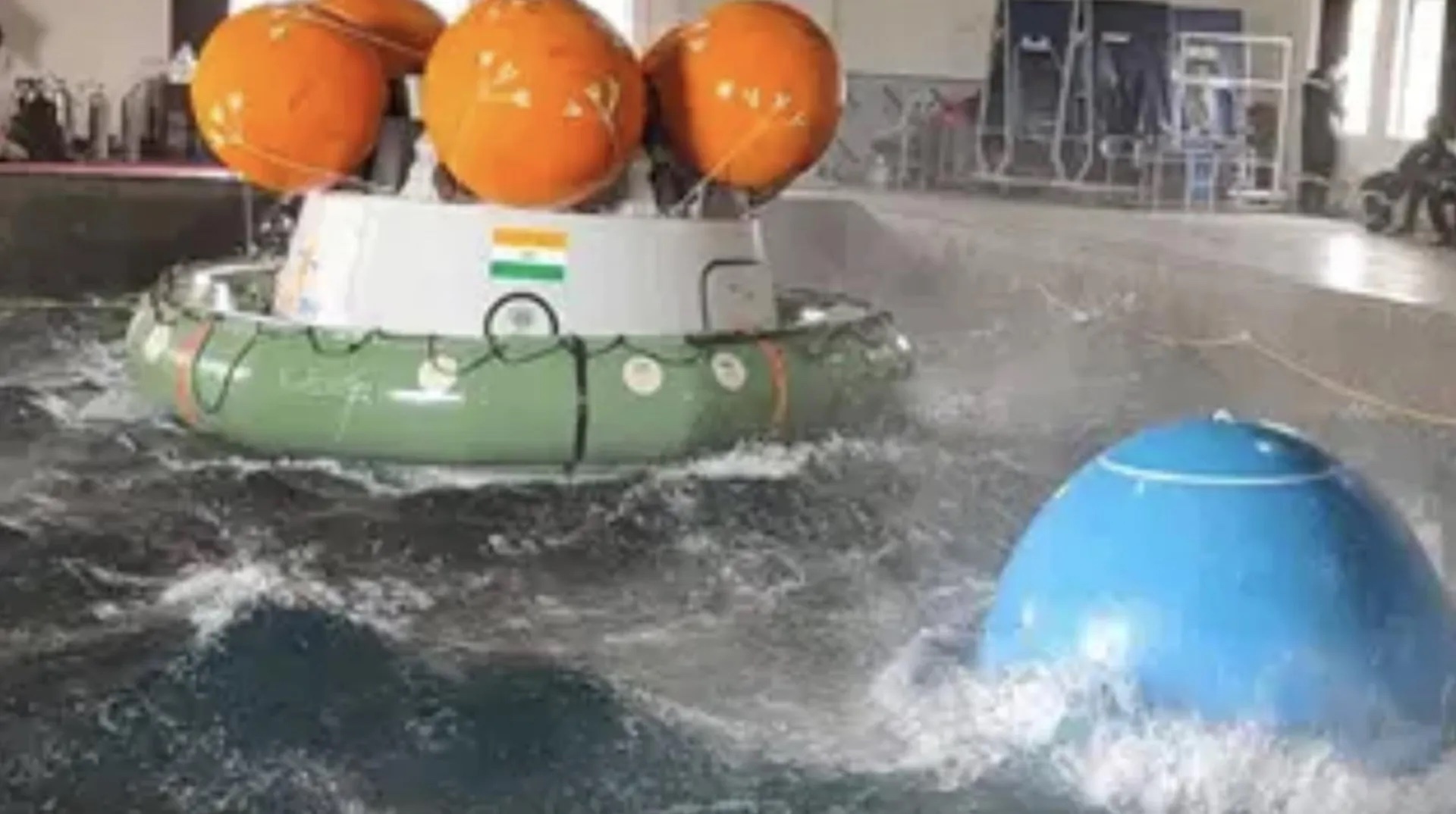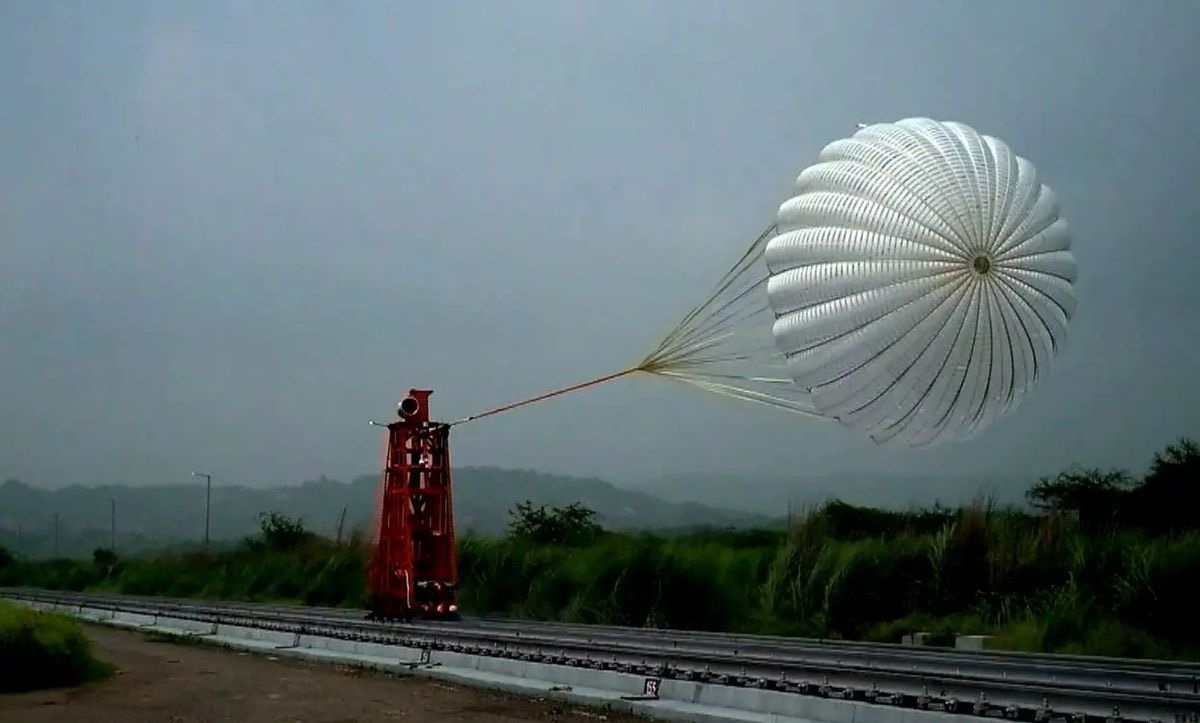13.02.2023
India tests recovery of spacecraft for Gaganyaan astronaut mission
Recovery procedures are yet to be finalized, ISRO said.
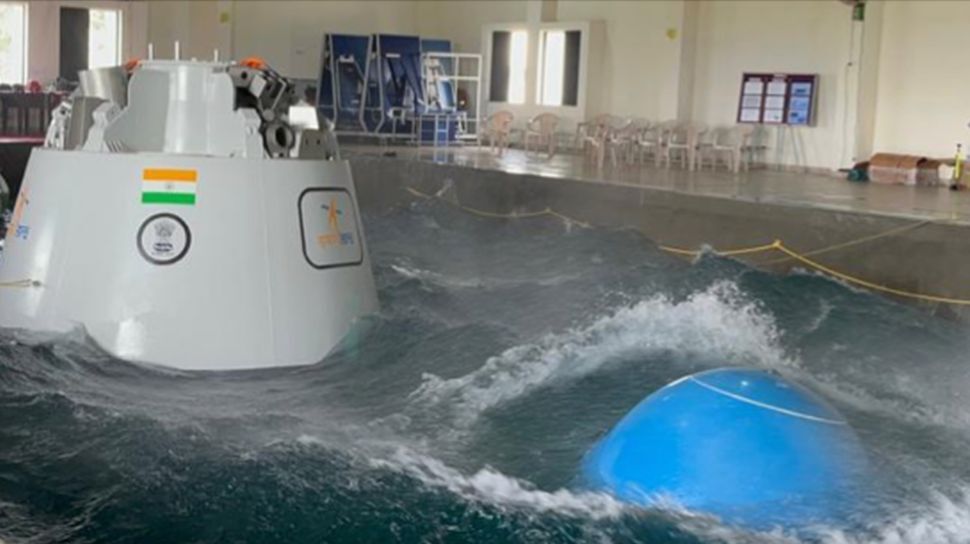
The Indian Space Research Organisation has begun testing recovery procedures for the nation's planned Gaganyaan astronaut mission, which is targeted to launch in 2024. (Image credit: ISRO)
After a string of delays, India's most ambitious mission is slowly finding its footing again.
On Tuesday (Feb. 7), the Indian Space Research Organisation (ISRO), India's national space agency, resumed a series of tests needed to perfect procedures and hardware for its Gaganyaan human spaceflight program. The agency collaborated with the Indian Navy to recover a mock crew module from a closed pool, it said Wednesday (Feb. 8) in a press release(opens in new tab).
The tests are being carried out at the Water Survival Test Facility, a location owned by the Indian Navy in Kochi (previously called Cochin), which is a city in southwest India. The state-of-the-art facility "simulates different sea state conditions, environmental conditions and day/night conditions," according to ISRO
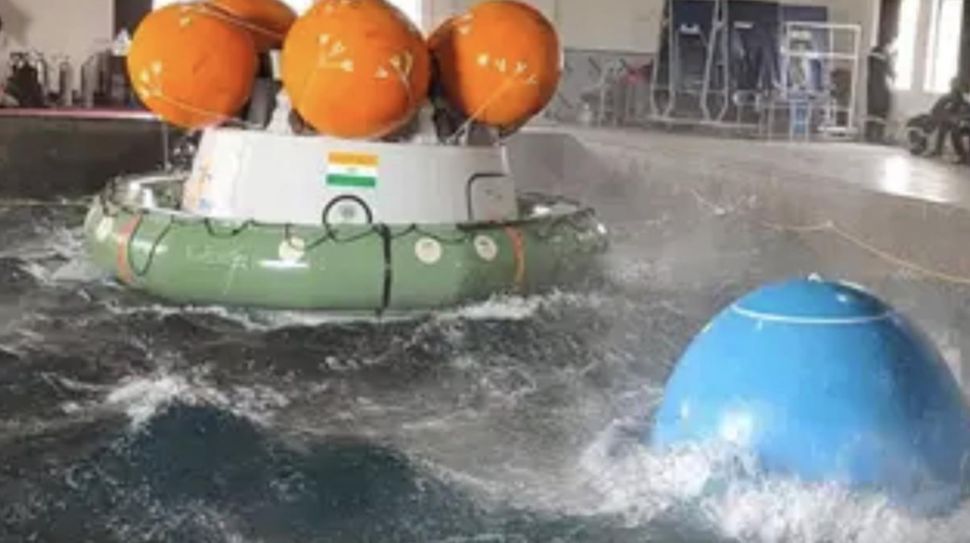
The recent Gaganyaan recovery practice runs simulated different ocean conditions. (Image credit: ISRO)
ISRO has long been testing the hardware that will fly astronauts on Gaganyaan missions. The agency validated the program's launch vehicle(opens in new tab) in 2014 and its launch abort and crew escape system(opens in new tab)s in 2018, before the coronavirus pandemic halted(opens in new tab) astronaut training, adding to the program's setbacks. ISRO slowly bounced back in 2021 with tests of engines(opens in new tab), solid rocket boosters(opens in new tab) and parachutes(opens in new tab).
In the latest tests in a controlled environment at Kochi, scientists have begun nailing down operations to recover the Gaganyaan module and its crew after they splash down in the ocean at mission's end. For now, scientists are using a mockup called the Crew Module Recovery Model (CMRM), which simulates details of the real one upon touchdown on water, including its mass, dimensions and center of gravity, the agency said.
Kochi, part of the coastal state of Kerala, touches the Bay of Bengal and offers an open sea where the agency will likely test its crew modules in the coming months.
ISRO said these tests also train the recovery teams and flight crew, who will work in coordination during reentry and landing to wrap up the week-long Gaganyaan orbital mission. Similarly, NASA's team practiced nine such tests using a mockup of its Orion capsule before being certified(opens in new tab) to recover the real spacecraft from the Pacific Ocean after the uncrewed Artemis 1 mission landed last December.
For India, Gaganyaan is the first mission of the Indian Human Spaceflight Programme, which was initiated back in 2007 with a goal to develop homegrown technology worthy of crewed missions. If successful, the mission would mark India's first crewed mission to space, and place the country fourth after the U.S., Russia and China to accomplish such a feat.
That accomplishment, however, is steadily being delayed one year at a time. ISRO had previously been targeting a crewed mission in December 2021, which it then pushed to August 2022 to mark India's 75 years of independence. However, in June 2022, the agency's chairman Shri. Somanath postponed(opens in new tab) the mission once again, citing safety concerns. The most current statement(opens in new tab)places the crewed launch in late 2024.
Before sending humans to space, ISRO will conduct two uncrewed flights to low Earth orbit using Gaganyaan gear, and at least one of those will carry a humanoid robot as payload, the agency has said(opens in new tab) in the past. These flights, meant to validate the mission's technology and launch vehicle, are now scheduled to occur in late 2023 and the first half of 2024.
ISRO continues to remain tight-lipped about the coming astronaut mission, so details even in the few official press releases and local media reports are sparse.
In its latest announcement, the space agency said the operating procedures for recovery efforts are yet to be finalized. It attributed the need for a high number of tests to the safe recovery of the crew, which is "the final step to be accomplished for any successful human spaceflight."
The recovery efforts for Gaganyaan's crew and crew module will be led by the Indian Navy with contributions from several other government organizations involved with the mission, the agency said.
Soon, ISRO plans to provide flight training to its crew at the same test facility in Kochi, which has the infrastructure for "realistic training" to hone them on escape procedures under different simulated scenarios, including crashes, the agency said.
Quelle: SC
----
Update: 8.04.2023
.
ISRO completes two crucial tests for Gaganyaan mission
ISRO could complete the human-rated L110-G Vikas engine qualification within a relatively short span of three years
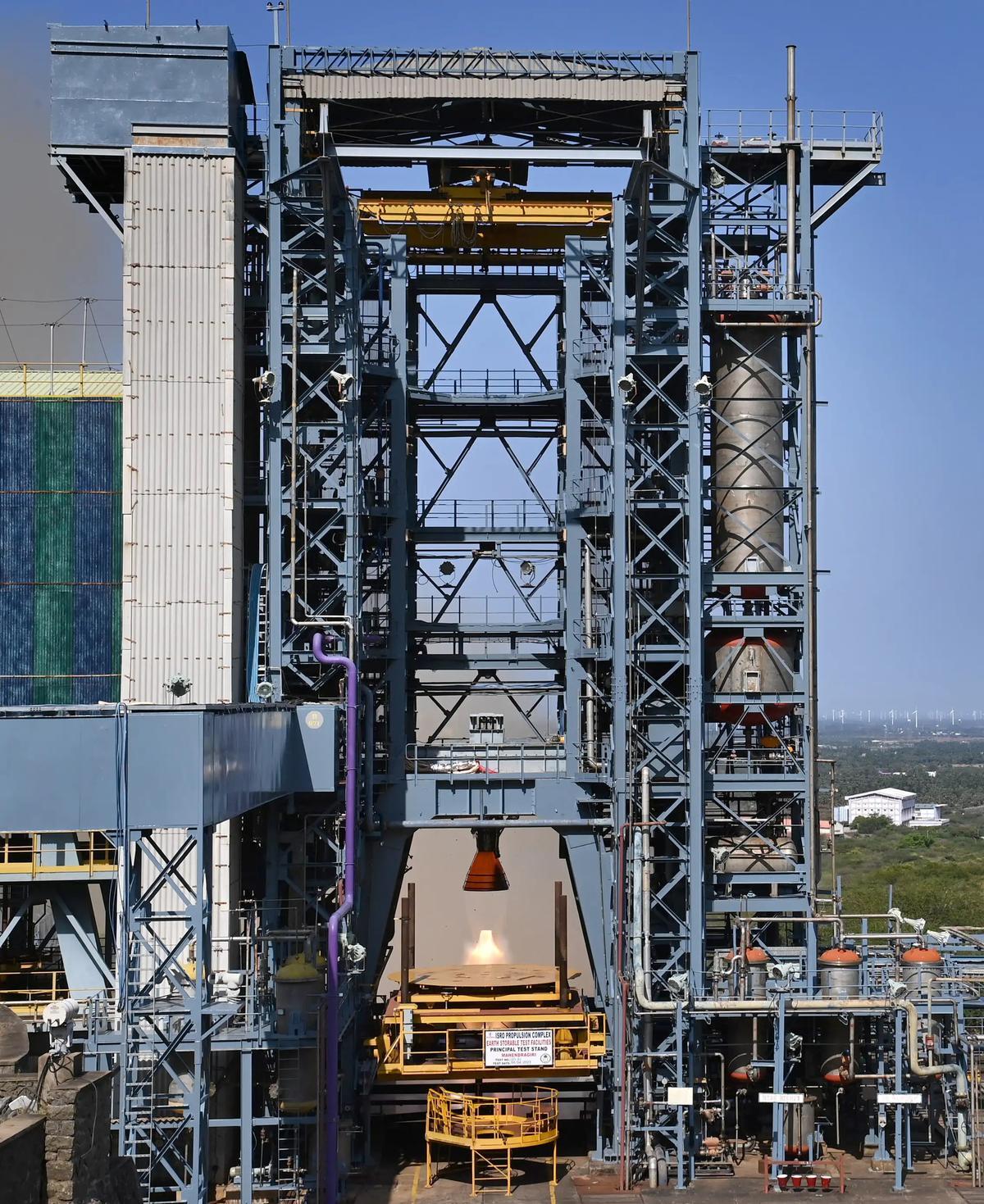
Testing of the Vikas engine was carried out at ISRO Propulsion Complex (IPRC), Mahendragiri on April 6, 2023.
Indian Space Research Organisation (ISRO) has completed two key tests for Gaganyaan — the Human Space Flight Programme.
The space agency said that the final long-duration hot test of human-rated L110-G Vikas engine was successfully accomplished for the planned qualification duration of 240 seconds on April 6 at ISRO Propulsion Complex (IPRC), Mahendragiri.
According to the space agency, the successful completion of this test marks a major milestone in the human space flight programme, Gaganyaan, of ISRO. The air-lit liquid core stage of human-rated launch vehicle (LVM3-G) uses two L110-G Vikas engines in clustered configuration. With this test, all the planned qualification tests of the engine have been completed successfully.
The Vikas engine uses storable propellants in a pump-fed gas generator cycle. Human rated Vikas engine has higher structural margins for sub-systems, improved assembly process and additional measurements for health monitoring. Human rated Vikas engine development hot tests were conducted in a step-by-step manner at Principal Test Stand, IPRC. Nine engines had undergone 14 hot tests with a cumulative duration of 1215 seconds, including four long-duration tests of 240 seconds each.
ISRO added that it could complete the human-rated L110-G Vikas engine qualification within a relatively short span of three years.
Crew module propulsion system test
Gaganyaan has got a bipropellant-based propulsion system for providing 3-axis control (Pitch, Yaw & Roll) to crew module following service module separation during re-entry, i.e. from an altitude of 170 km to 7 km till deployment of the parachute-based deceleration system.
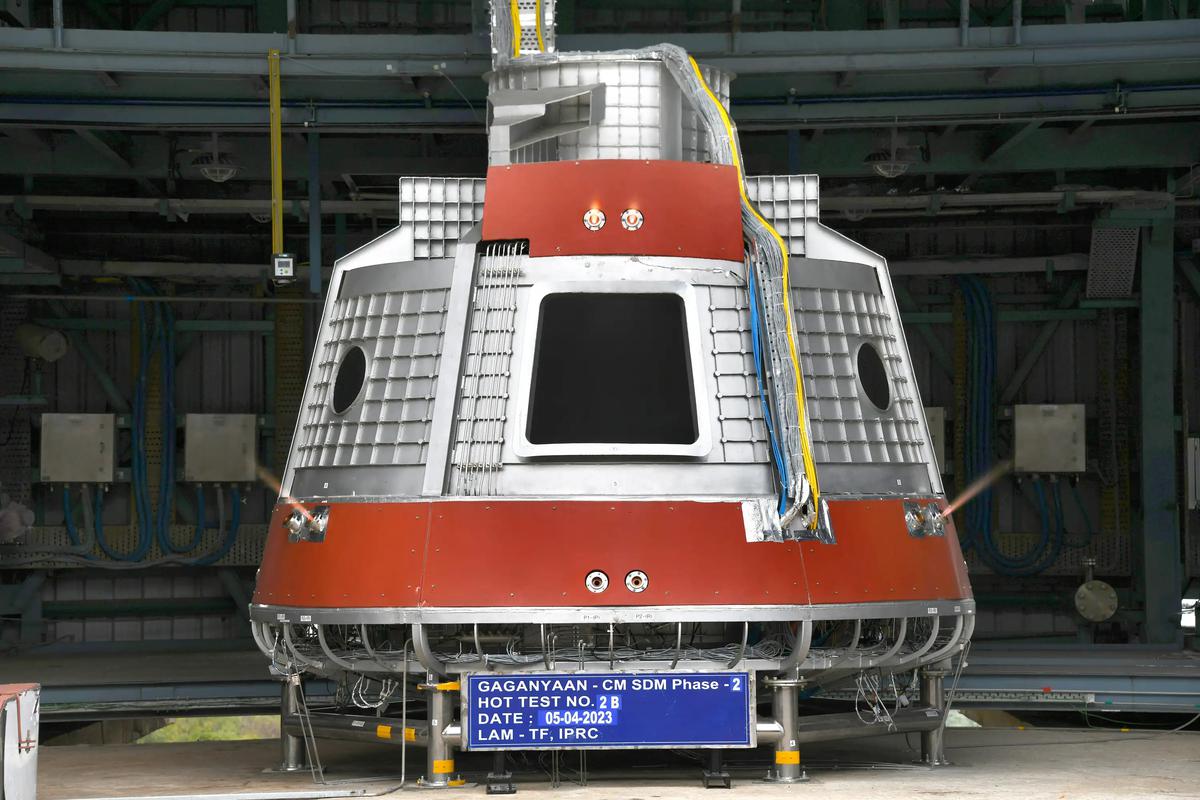
The crew module for the Gaganyaan programme. On April 5, the hot test of the crew module propulsion system for demonstrating nominal re-entry for the duration of 650 seconds was successfully conducted at ISRO Propulsion Complex, Mahendragiri.
It also provides altitude control in the ascent phase abort, if any, from 3 km to 70 km.
On April 5, the hot test of the crew module propulsion system for demonstrating nominal re-entry for the duration of 650 seconds was successfully conducted at ISRO Propulsion Complex, Mahendragiri. Prior to this, a series of tests were carried out with six thrusters.
Completing this test is a major step in qualifying the Crew Module Propulsion System for the Gaganyaan programme.
Quelle: The Hindu
----
Update: 15.05.2023
.
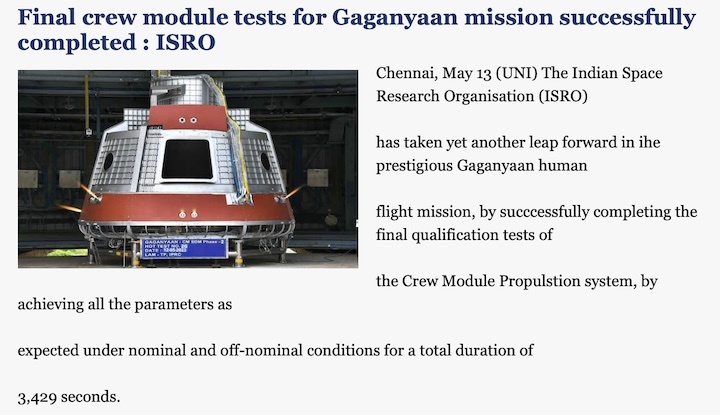
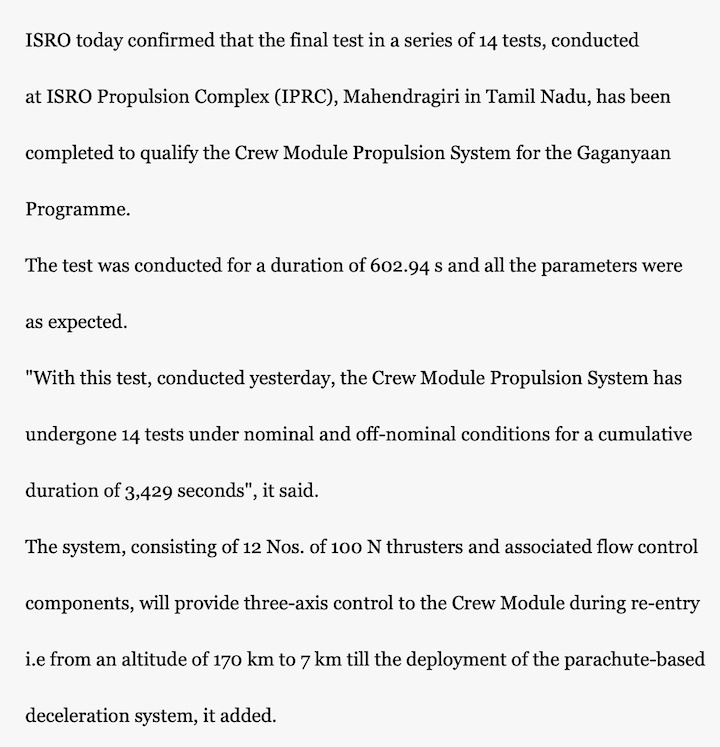

Quelle: UNI
----
Update: 21.07.2023
.
ISRO successfully tests Service Module Propulsion System of human space flight
Test involved five liquid apogee motor engines with a thrust of 440 N and 16 reaction control system Thrusters with a thrust of 100 N
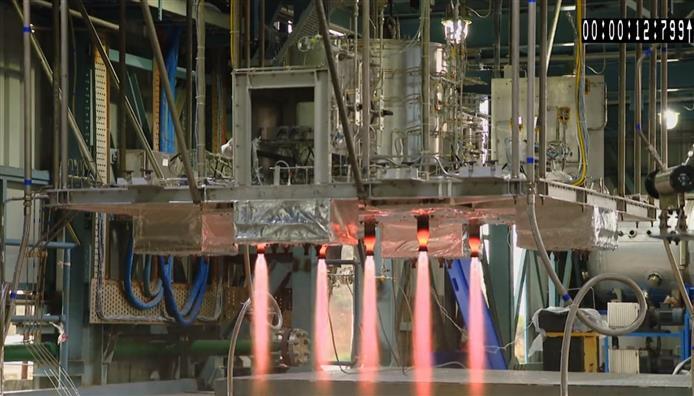
The test, conducted for a duration of 250 seconds, involved LAM engines firing in continuous mode, along with RCS thrusters, adhering to the test profile. — @isro/Twitter
ISRO successfully tested the Gaganyaan Service Module Propulsion System (SMPS) atISRO Propulsion Complex (IPRC), Mahendragiri, Tamil Nadu.
The state run space agency said this in a press release on Thursday.
The test involved five liquid apogee motor (LAM) engines with a thrust of 440 N and 16 reaction control system (RCS) Thrusters with a thrust of 100 N.
The Service Module of Gaganyaan is a regulated bi-propellant based propulsion system that caters to the requirements of the Orbital Module, performing orbit injection, circularization, on-orbit control, de-boost manoeuvring and SM based abort (if necessary) during the ascent phase.
The 440 N Thrust LAM engines provide the main propulsive force during the mission ascending phase, while the RCS thrusters ensure precise attitude correction.
The test, conducted for a duration of 250 seconds, involved LAM engines firing in continuous mode, along with RCS thrusters, adhering to the test profile.
With the successful completion of the hot test, the SMPS has advanced in demonstrating its integrated performance in the full configuration.
Moving forward, ISRO has scheduled five additional tests to demonstrate both nominal and off-nominal mission scenarios.
Quelle: The Tribune
----
Update: 4.09.2023
.


